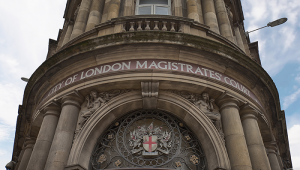Since 2011-12 the government’s central estate has saved £775m and reduced in size by 1.7 million m2 (17%) to 8 million m2, 94% - of which was from offices - between January 2012 to March 2016, today’s report stated.
But the chair of the Public Accounts Committee Meg Hillier said the unit set up to streamline the government’s land and property is “struggling” to get departments on board.
“The Government Property Unit [GPU] is struggling to get them [government departments] on board with its efforts to streamline the estate further," she said
Today's NAO report said the government’s central estate included 4,600 individual holdings, which cost £2.55bn a year to run - a decrease in costs of 23% from 2012 to 2016.
Amyas Morse, head of the National Audit Office, said: “Departments have continued to reduce their estates, and government is now getting better value for money.”
But she added: “The GPU still needs to make more headway to achieve a shared, flexible and integrated estate.”
She believed the GPU should “take stock and, if necessary, delay, redesign or consider phasing its programmes over a longer timescale”.
The Cabinet Office plans to launch a new agency – called the Government Property Agency - to own and manage its properties from September, which will work alongside the GPU.
Hillier was concerned about this. “It is worrying that the Cabinet Office is charging ahead and launching a new agency to own and manage £3bn of property, while departments still don’t agree on next steps,” she said.
“We have already seen how large property-holding departments like HMRC and the Ministry of Defense need to improve how they manage their estates.”
But the NAO praised the GPU’s hub programme, which aims to co-locate around 270,000 staff by 2023 and The New Property Model (NPM), which calls for all departments to transfer their existing offices and some of their other properties to the Government Property Agency.
The GPU was set up in 2010 to improve the co-ordination of the estate management in the public sector.
Today’s report found the government had reduced overall estate spending and paid less for office accommodation than private sector comparators – making savings of hundreds of millions.
The government was also able to raise £2.5bn by selling surplus land and properties between 2011-12 and 2015-16.
The GPU had also helped local authorities achieve £25.6m in property disposals, £7.7m of savings in running costs, create 935 jobs and release land for the development of 532 homes.
But the GPU has a shortage of property and project management experts and its skills and resources are stretched, according to the NAO.











